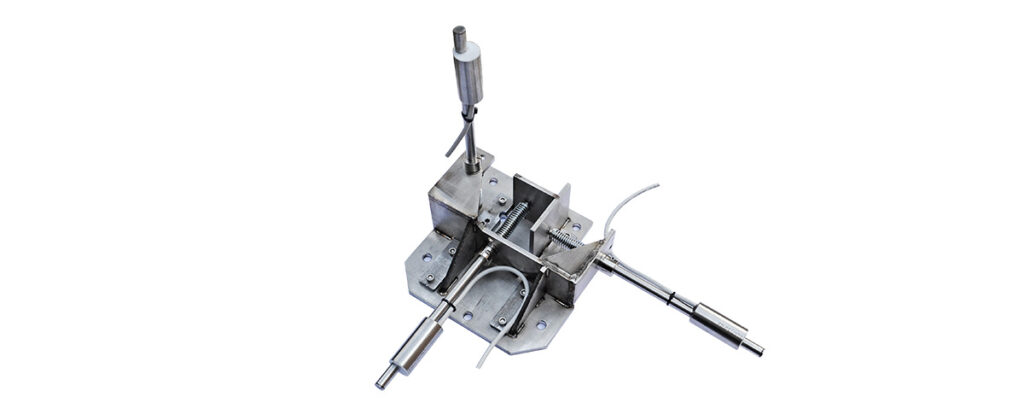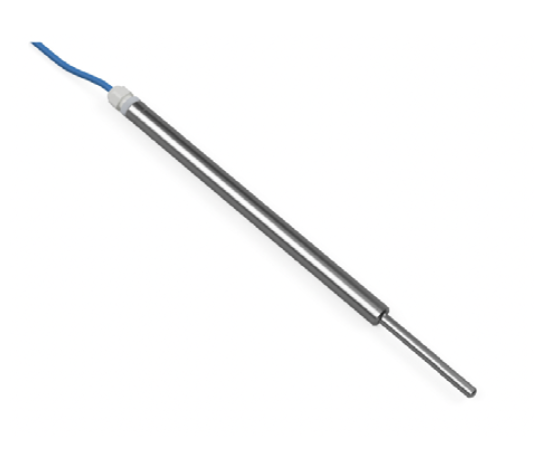
Long-stroke vibrating wire extensometers
Long-stroke vibrating wire extensometers, commonly called crackmeters, are used to measure the surface movements of structural cracks and joints, rock movements and ground deformations. They consist
The family of crackmeters, strain gauges and joint meters includes all instruments and electrical and mechanical components for the control and measurement of cracks, fractures, joints, faults etc..
Normally they are used for monitoring of dams:
Pizzi Instruments manufactures and supplies crack meters, deformometers and various types of joint meters with electrical, mechanical, automatic or manual reading.
Electrical crackmeters are used in monitoring and control for:
Pizzi Instruments offers electrical crackmeters with vibrating wire sensor, potentiometers or LVDT (electro magnetic).
The choice between the various types of transducer depends on specific application and is advised by our technicians according to information provided by the customers and captured on site. Rugged construction and protection levels up to IP68 make our electrical crackmeters and especially vibrating wire crack meters, particularly suitable for monitoring in dams, tunnels, wells, buildings, landslides and so on.
Electrical and vibrating wire crackmeters can be used with mechanical biaxial or triaxial devices and supports to monitor deformation in 2 or 3 orthogonal directions (2D or 3D control).
Mechanical biaxial deformometers (deformometer 2D) or triaxial (deformometer 3D) are used when automatic reading is not expected or necessary and where measuring places are accessible by the operator. They are often provided as reliable alternative monitoring to the automatic sensor.
Our removable deformometers are made of stainless steel or Invar, with analog or digital reading comparators. They are simple instruments to use and non-invasive The measuring points are equipped with small mountings positioned either side of the joint or crack, to which the deformometer refers for the reading of the distance between the two points and displays on the centesimal and millesimal dial indicator on its body (Invar model).
The main advantages are:
non-invasiveness,
simplicity of handling, installation of measuring locations and reading
speed of execution
They consist of a biaxial or triaxial mechanical block whose elements are placed either side of the cracks. The measurements are made through a special caliber.
They are also available in wire strain gauges which are used to monitor reference points at great distance from each other. They consist of a body containing the electric sensor and a spring holding a tense non-extendable wire of different length to whose end the coupling device is fixed.
Gauges to monitor the structure of joints in dams are usually embedded in concrete??. They are usually installed either side of a joint and can be external or embedded in concrete.
For specific needs and requests, we are able to develop and manufacture customized solutions different from standard.

Long-stroke vibrating wire extensometers, commonly called crackmeters, are used to measure the surface movements of structural cracks and joints, rock movements and ground deformations. They consist

The wire deformometer is usually used to monitor and measure movements in landslides by measuring two points distant from each other. The instrument is made from

The mechanical 3D joint meter is a very simple and extremely strong instrument that allows automatic or manual measurement of the movements of cracks or joints

Pizzi Instruments’ removable deformometer 200 is a portable mechanical crackmeter with a base of 200 mm used for the control and measurement of the behavior of

The removable deformometer 700 Pizzi Instruments is a portable mechanical crackmeter with a base of 700 mm, used for the control and manual measurement of the

The EN3 tape extensometer allows the measurement of relative movements between two points distant from each other (2m -d -20m, optional 30m) and visible to each

Electrical crackmeters, for some applications, may be an alternative to vibrating wire crackmeters. Potentiometric and electromagnetic (LVDT) Electrical crackmeters are currently available .The choice between the

These crackmeters can be used in a wide variety of situations, especially where continuous or very frequent measurements are required, such as: monitoring of load tests
Copyright © Pizzi Instruments S.r.l
Powered by Dotflorence® Srl